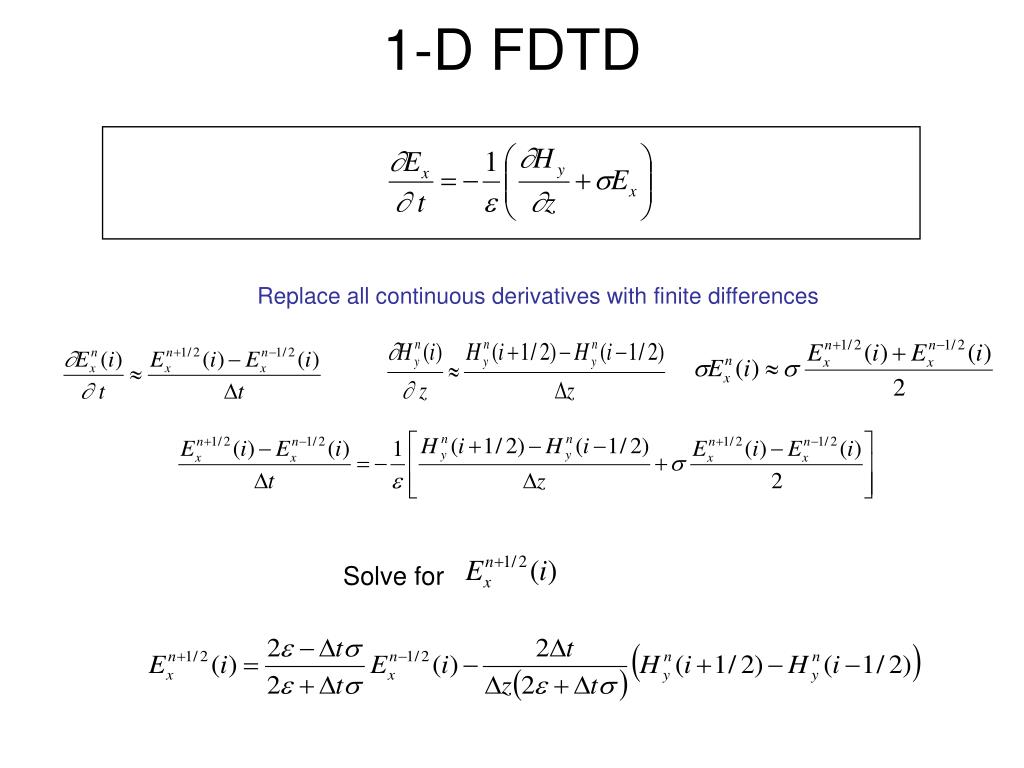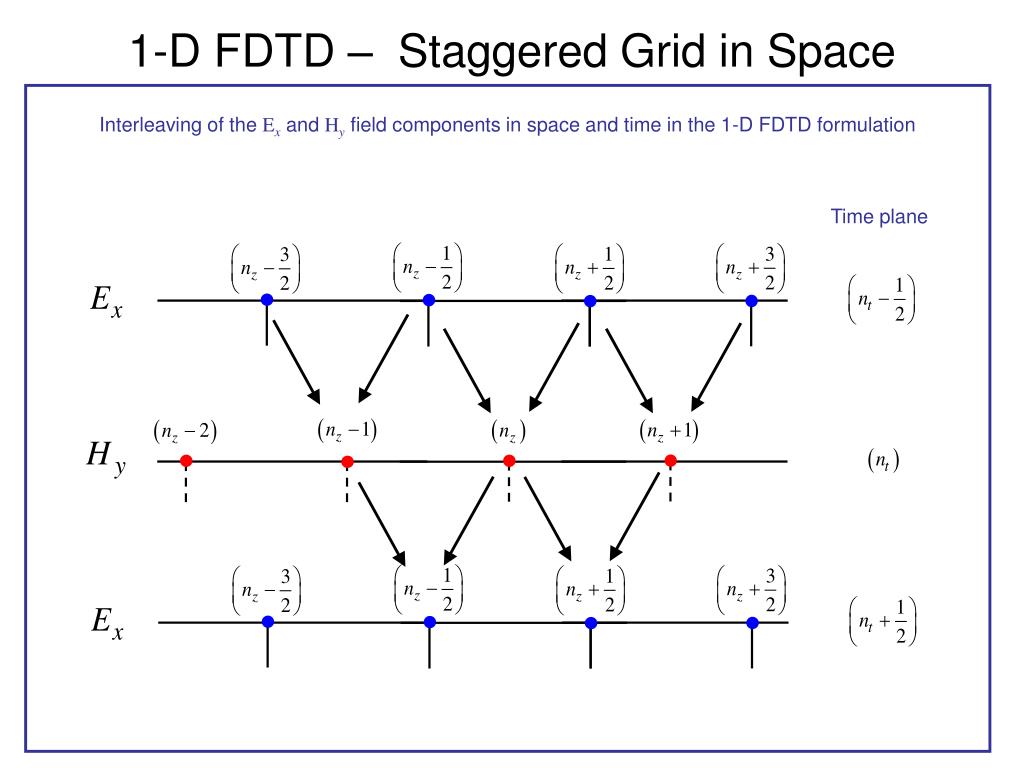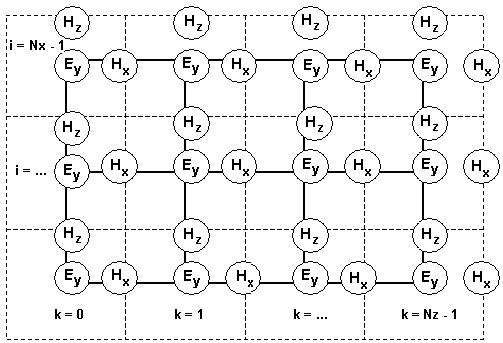

- Fdtd method ppt update#
- Fdtd method ppt skin#
- Fdtd method ppt software#
- Fdtd method ppt code#
- Fdtd method ppt free#
On the other hand, this flexibility comes at a price of substantial software complexity, which may not be worthwhile for dielectric devices at infrared wavelengths (such as in integrated optics or fibers) where the refractive index (and hence the typical resolution required) varies by less than a factor of four between materials, while small features such as surface roughness can be accurately handled by perturbative techniques.
Fdtd method ppt skin#
The nonuniform unstructured grids of FEMs, for example, have compelling advantages for metallic structures where micrometer wavelengths may be paired with nanometer skin depths. Each tool, of course, has its strengths and weaknesses, and we do not believe that any single one is a panacea.

Since then, Meep has been cited in over 100 journal publications and has been downloaded over 10,000 times, reaffirming the demand for such a package.įDTD algorithms are, of course, only one of many numerical tools that have been developed in computational electromagnetism, and may perhaps seem primitive in light of other sophisticated techniques, such as finite-element methods (FEMs) with high-order accuracy and/or adaptive unstructured meshes, ,, or even radically different approaches such as boundary-element methods (BEMs) that discretize only interfaces between homogeneous materials rather than volumes,. Most of these are not released to the public, and the handful of other free-software FDTD programs that could be downloaded when Meep was first released in 2006 were not nearly full-featured enough for our purposes.
Fdtd method ppt code#
Our interactions with other photonics researchers suggest that many groups end up developing their own FDTD code to serve their needs (our own groups have used at least three distinct in-house FDTD implementations over the past 15 years), a duplication of effort that seems wasteful. Why implement yet another FDTD program? Literally dozens of commercial FDTD software packages are available for purchase, but the needs of research often demand the flexibility provided by access to the source code (and relaxed licensing constraints to speed porting to new clusters and supercomputers). Here, rather than review the well-known FDTD algorithm itself (which is thoroughly covered elsewhere), we focus on the particular design decisions that went into the development of Meep whose motivation may not be apparent from textbook FDTD descriptions, the tension between abstraction and performance in FDTD implementations, and the unique or unusual features of our software. It also includes some unusual features, such as advanced signal processing to analyze resonant modes, accurate subpixel averaging, a frequency-domain solver that exploits the time-domain code, complete scriptability, and integrated optimization facilities. Meep is full-featured, including, for example: arbitrary anisotropic, nonlinear, and dispersive electric and magnetic media a variety of boundary conditions including symmetries and perfectly matched layers (PML) distributed-memory parallelism Cartesian (1d/2d/3d) and cylindrical coordinates and flexible output and field computations. This paper describes our free, open-source implementation of the FDTD algorithm: Meep (an acronym for MIT Electromagnetic Equation Propagation), available online at. One of the most common computational tools in classical electromagnetism is the finite-difference time-domain (FDTD) algorithm, which divides space and time into a regular grid and simulates the time evolution of Maxwell's equations, ,. Forum, MPI: A Message Passing Interface, in: Supercomputing 93, Portland, OR, 1993, pp. 1999 Geoscience and Remote Sensing Symposium (IGARSS), Hamburg, Germany, vol.
Fdtd method ppt update#
Yeager, HDF: An update and future directions, in: Proc. Running time: Problem dependent (typically about 10 ns per pixel per timestep)

Solution method: Finite-difference time-domain (FDTD) method Nature of problem: Classical electrodynamics
Fdtd method ppt free#
RAM: Problem dependent (roughly 100 bytes per pixel/voxel)Įxternal routines: Optionally exploits additional free software packages: GNU Guile, libctl interface library, HDF5, MPI message-passing interface, and Harminv filter-diagonalization (which requires LAPACK and BLAS linear-algebra software ). Operating system: Any Unix-like system developed under Debian GNU/Linux 5.0.2. of bytes in distributed program, including test data, etc.: 1 925 774Ĭomputer: Any computer with a Unix-like system and a C++ compiler optionally exploits additional free software packages: GNU Guile, libctl interface library, HDF5, MPI message-passing interface, and Harminv filter-diagonalization. of lines in distributed program, including test data, etc.: 151 821 Program obtainable from: CPC Program Library, Queen's University, Belfast, N.


 0 kommentar(er)
0 kommentar(er)
